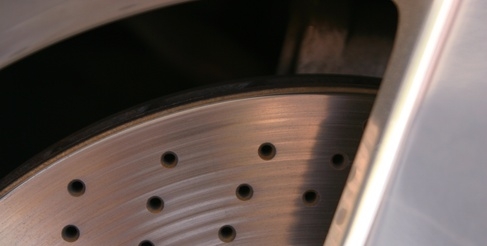
Brake rotor turning is the process of machining a brake rotor so that the surface is completely flat and smooth again. When rotors are manufactured, they are perfectly flat so that the brake pad grips it firmly when the brakes are applied, and there is no vibration or odd noise. As the rotor ages and wears, though, it can become warped and tarnished. Rather than replace the rotor with a new one, it may be possible to have the rotor turned by a machine shop.
Loosen the lug nuts that hold the vehicle's wheels on with a lug wrench. Raise the vehicle with a floor jack and lower it onto a jack stand at the corner where the brake rotor will be removed. Finish removing the lug nuts and the wheel, then set it out of the way.
Remove the two large bolts that hold the caliper to the suspension. These will face the wheel well and will be on the back of the caliper. Slide the caliper off of the rotor. Support the caliper with a piece of wire tied to a nearby suspension part so that it does not drag on the soft brake line.
Remove the hardware that holds the rotor to the hub. On some cars, only the caliper keeps the rotor in place; so once the caliper is removed, you can simply pull the rotor straight off. Other makes, such as BMWs, use a small set screw to locate the rotor against the hub, and that is removed with a screwdriver or an Allen wrench. Some other makes may require that you remove the large hub nut behind the dust shield on the end of the axle/hub assembly. Consult a manual for your specific make and model for detailed instructions.
Take the rotor to a reputable machine shop that turns brake rotors. They will be able to determine if the rotor is still thick enough to machine and reuse by looking up the manufacturer's specifications in a data book. Never attempt to machine a rotor unless you are a trained professional with the proper milling equipment. Having rotors machined is generally relatively inexpensive and should range from $15 to $30.
Reinstall the rotor after it has been surfaced. Slide it back onto the hub. Reinstall the hardware that holds it on. Slide the caliper back over the rotor and reinstall the caliper bolts. If the pads are old, it is recommended that you install new ones or at least check the thickness of the existing pads.
Reinstall the wheel. Lower the vehicle to the ground. Pump the brakes until the pads press against the new rotor and the brake pedal feels firm.